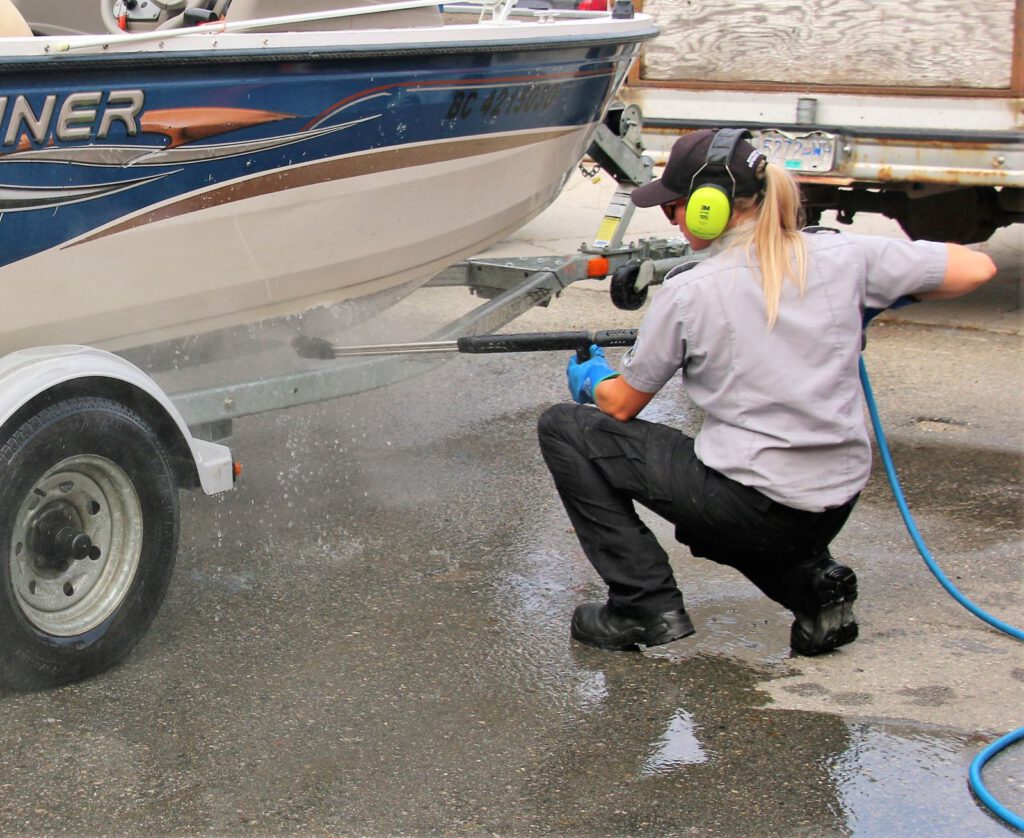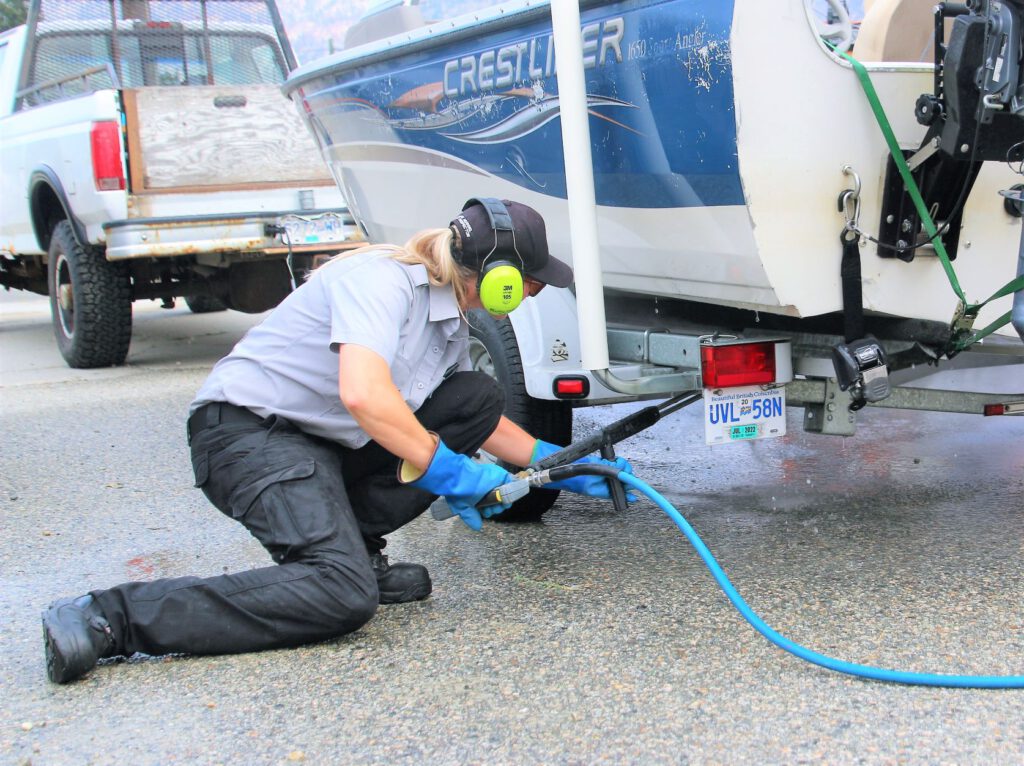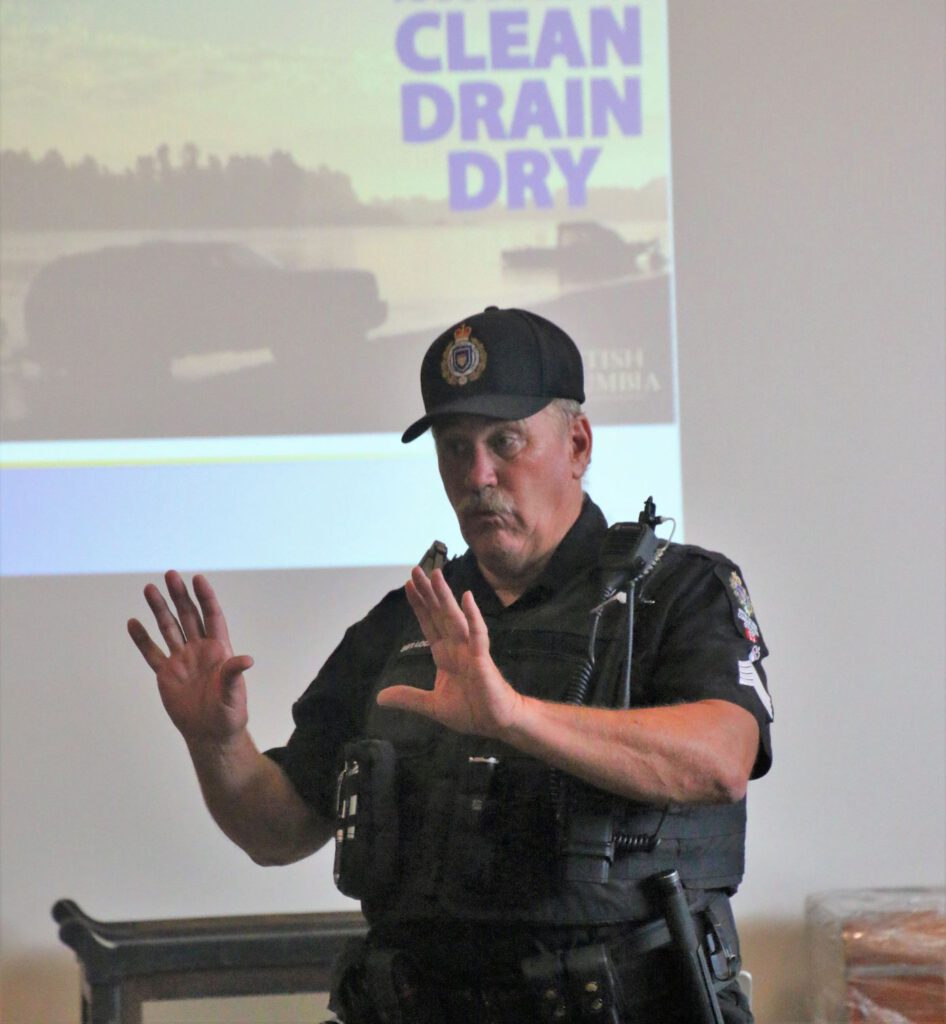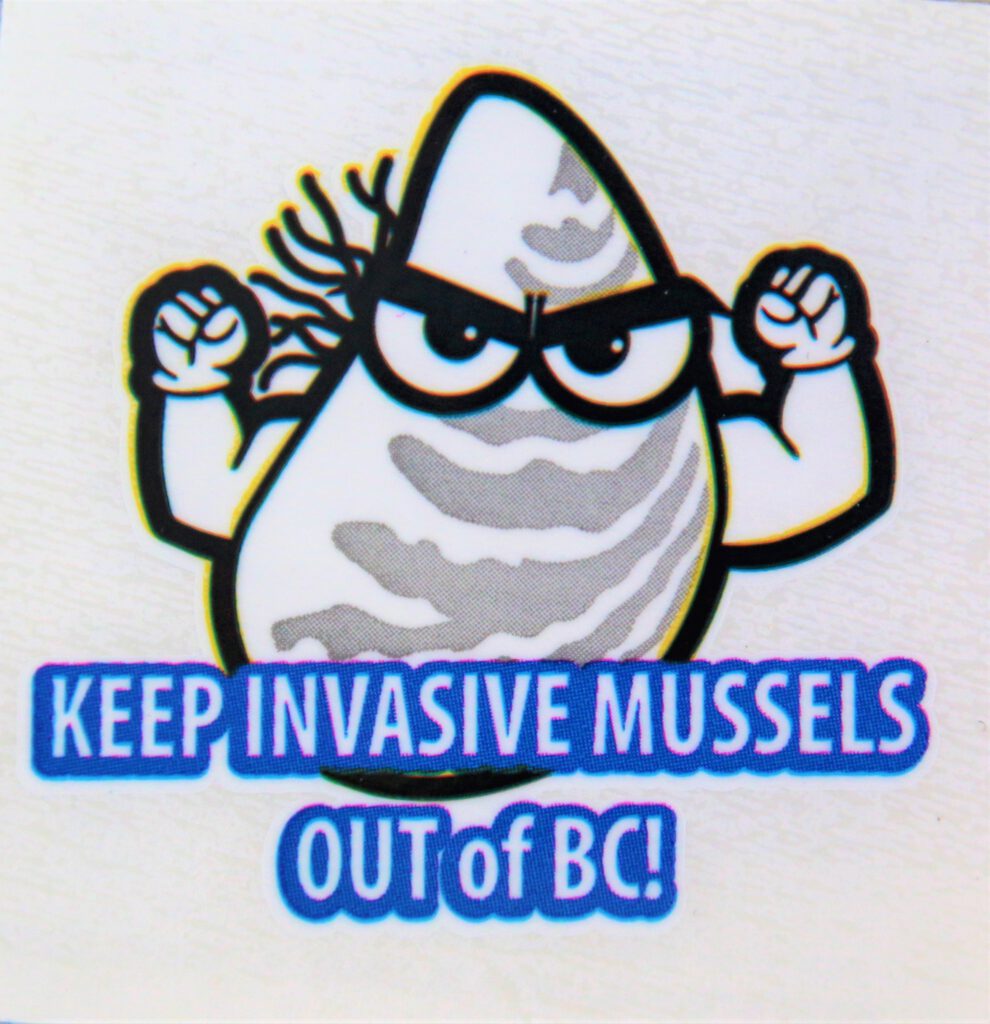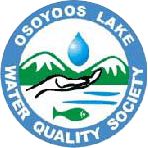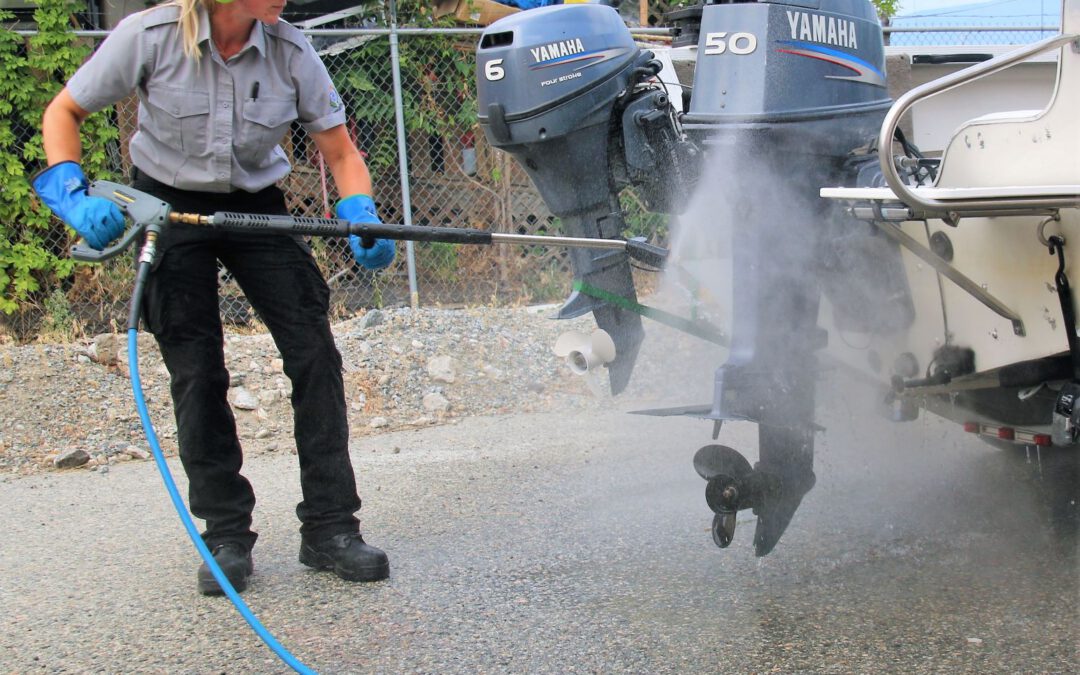by Birgit Arnstein, President, OLWQS
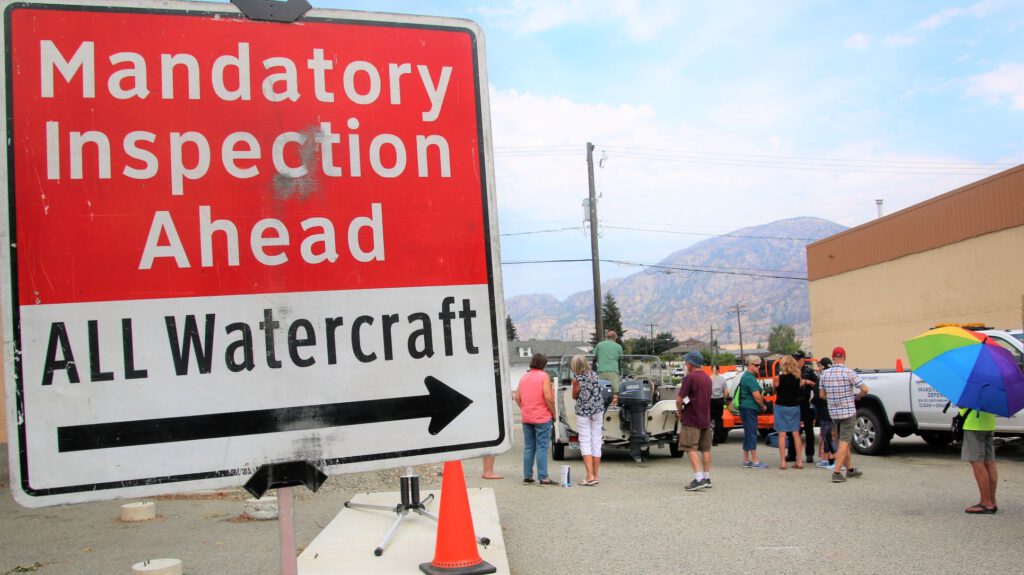
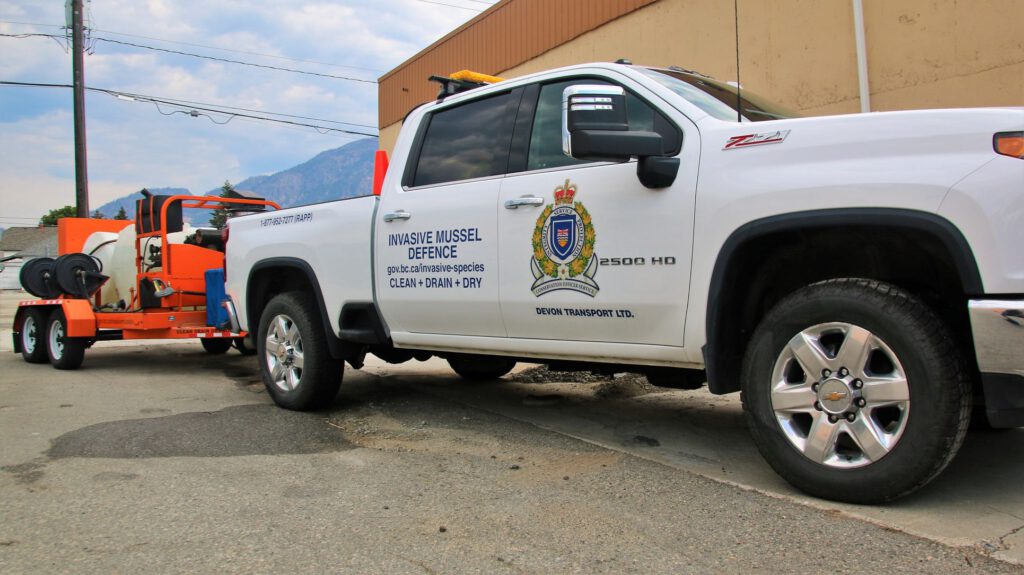
On August 20th, the Invasive Mussel Defense Program staff provided a power point presentation and a demonstration in the new Osoyoos & District Museum & Archives building and in its adjacent parking lot.
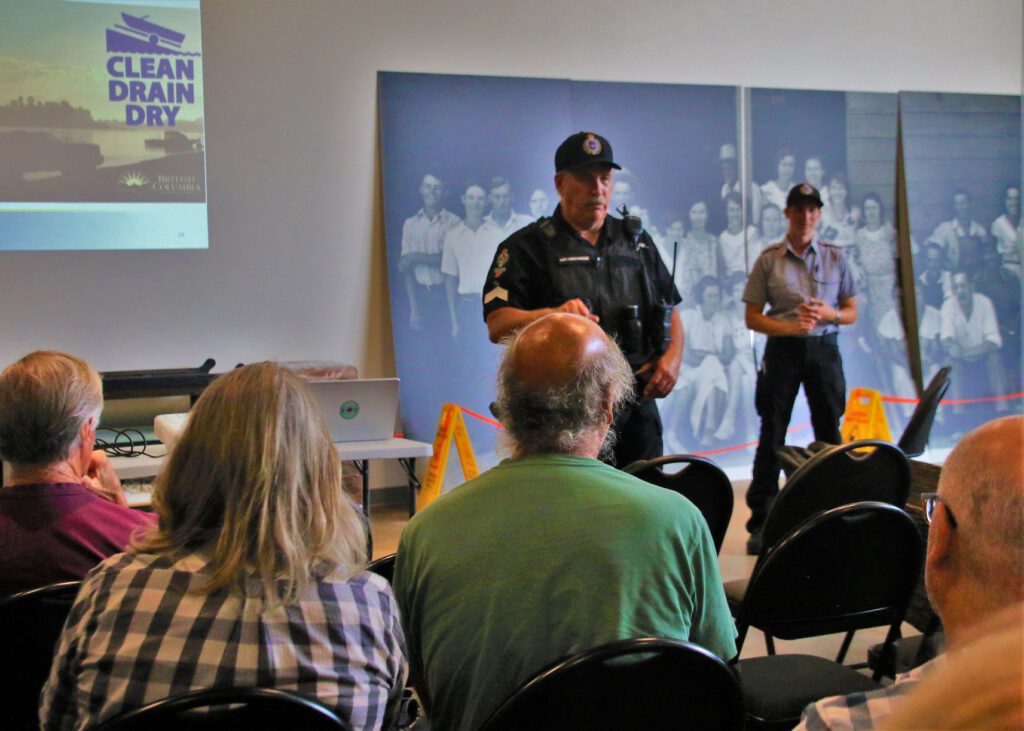
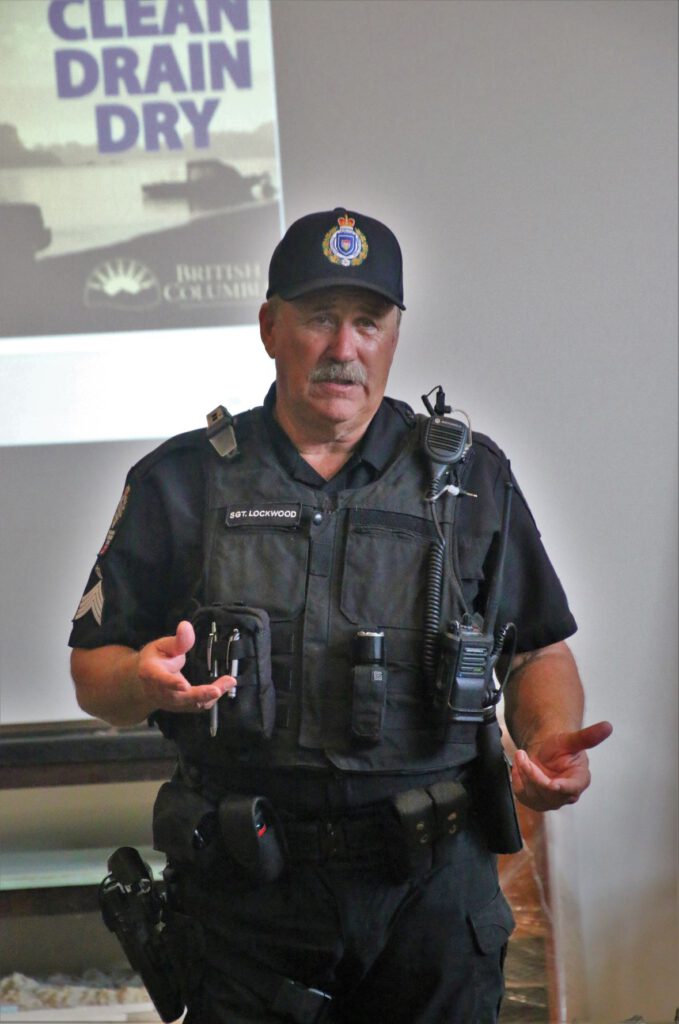
keep mussels out of Osoyoos Lake. Photo Credit Neil Bousquet
Sergeant Josh Lockwood, Officer Becca Benham and Officer Sharon Crocker provided a very informative demonstration.
Many years ago, Invasive Mussels arrived in the St. Lawrence Seaway inside a ship from the Baltic Sea. The ship had zebra and quagga mussels in its bilge. These tiny finger nail size mussels can survive in a damp environment for up to 30 days. One zebra or quagga female can produce one million eggs per year.
The byssel threads (strong silky fibers that are made from proteins that are used by invasive mussels to attach themselves to hard surfaces e.g. rocks, boats, docks, motor propellers) and enable the mussels to ‘swim’ and attach to various watercraft as well as floaties, kayaks, hip waders, life jackets, boat motors etc. They also encrust docks, lake intake pipes, basically anything that has a hard surface and is in a lake. The dead shells are razor sharp and necessitate the use of very thick protective footwear.
These invasive mussels are now found in all the Great Lakes, Lake Winnipeg as well as many lakes in the United States, including Nevada, Utah, Colorado, California, Montana, Arizona and Texas. Fortunately, no invasive mussels have been found in British Columbia, Alberta, Idaho, Oregon or Washington State to date. Currently, there are no successful means to rid infested waterways. Prevention through thorough inspection and adherence of boat users to follow the protocols of ‘CLEAN, DRAIN & DRY’ for all water craft/toys as well as all paraphernalia that is taken from one lake to another is our best protection.
The town of Osoyoos’ infrastructure and indeed the tourism industry would be severely impacted if zebra or quagga mussels entered our waters. Millions upon millions would be required to offset the great damage these mussels would do to our lake. The fish stocks including the recently re-established sockeye salmon in our lakes would be depleted. Important lake nutrients would be eliminated thus affecting all life forms in the lake. These mussels may also harm drinking water as the natural nutrient balance is impaired. Local real estate properties and tourism would be severely impacted.
British Columbia has a number off inspection stations – at border crossings, along the major highways. Golden has a 24/7 inspection station which also has a dog (Kilo) who has been trained to detect these invasive mussels and their larval forms. Travellers with any watercraft must stop at these inspection stations. They are asked where their boat has been, when it was last in a body of water. Boats and other water craft are examined and decontaminated, if necessary. Failure to stop at inspection stations can result in high fines and possibly impounding a boat.

If a boat needs to be decontaminated – Water heated to 160C is sprayed over all surfaces including into the motor.
Our lifestyle would be very adversely impacted if these mussels entered our waters.
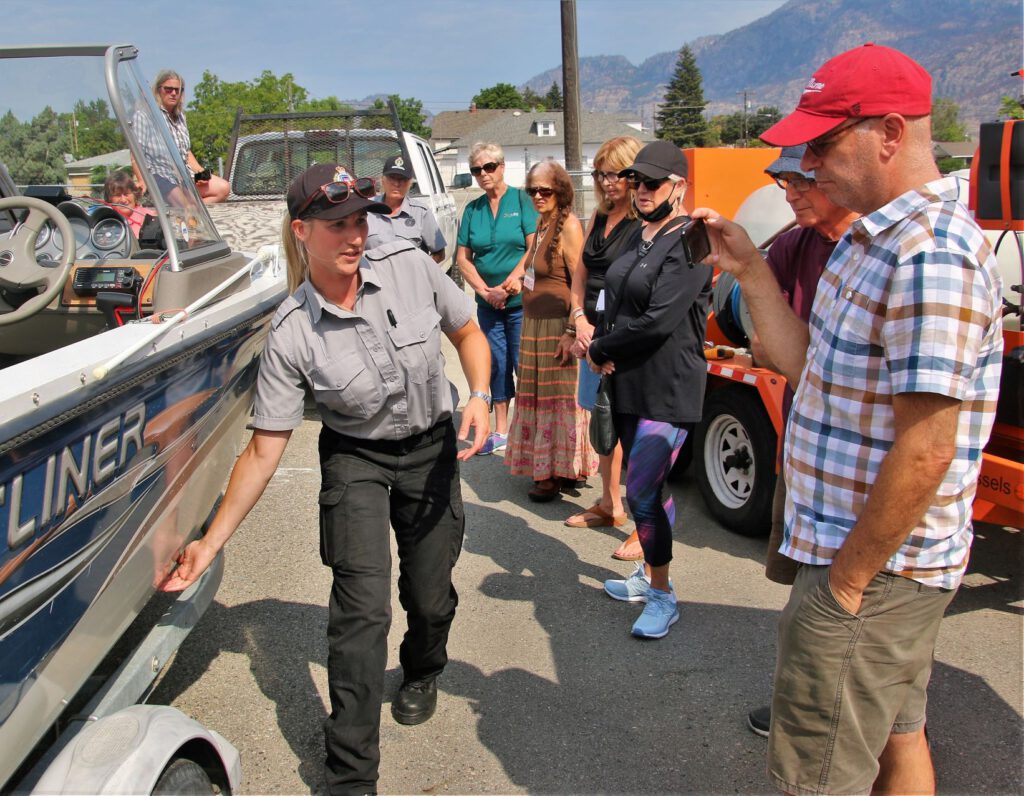
Photo Credit Neil Bousquet
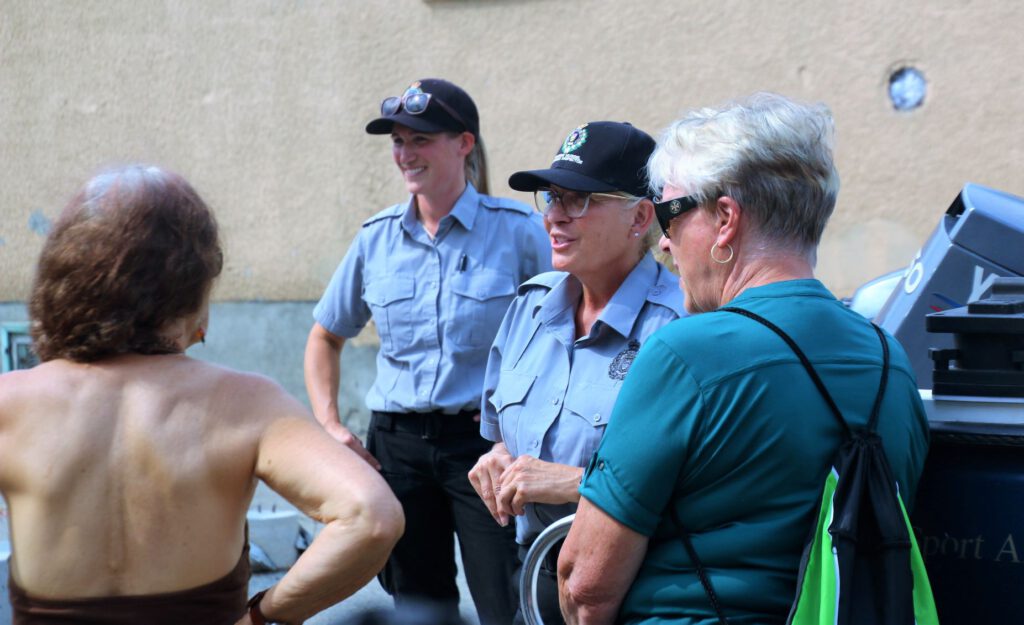
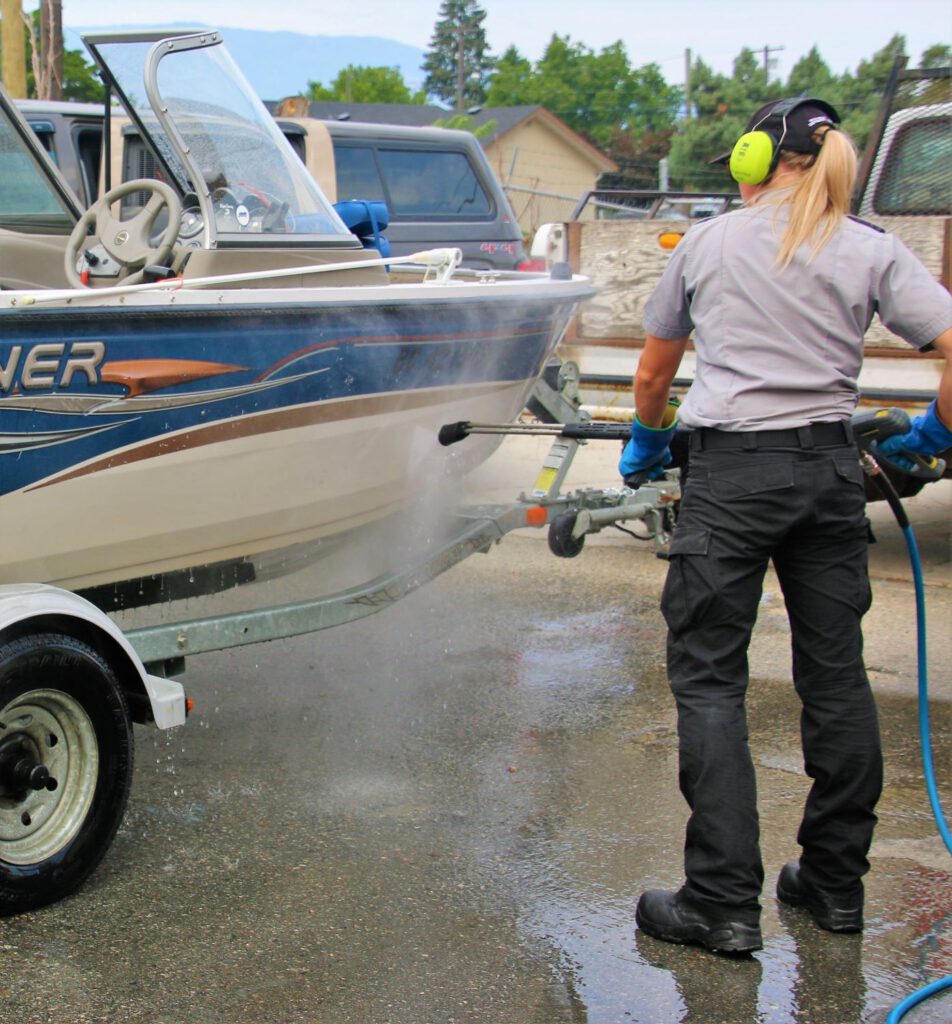
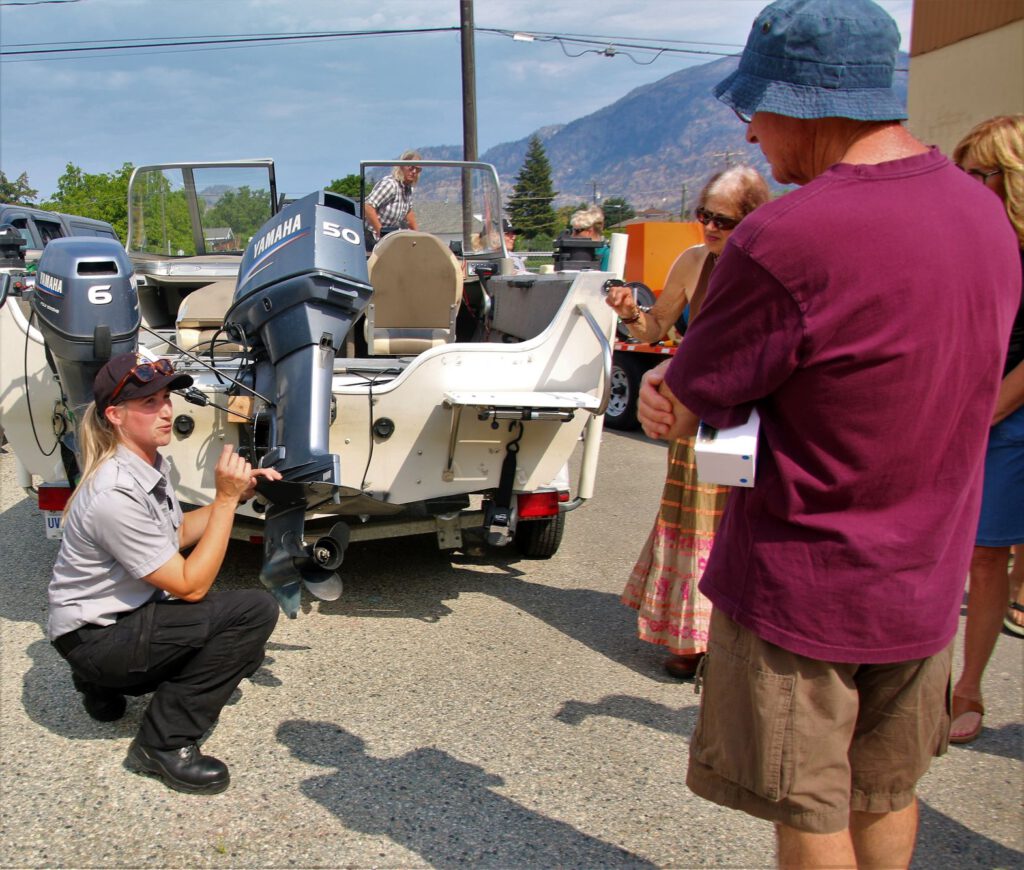
Photo Credit Neil Bousquet
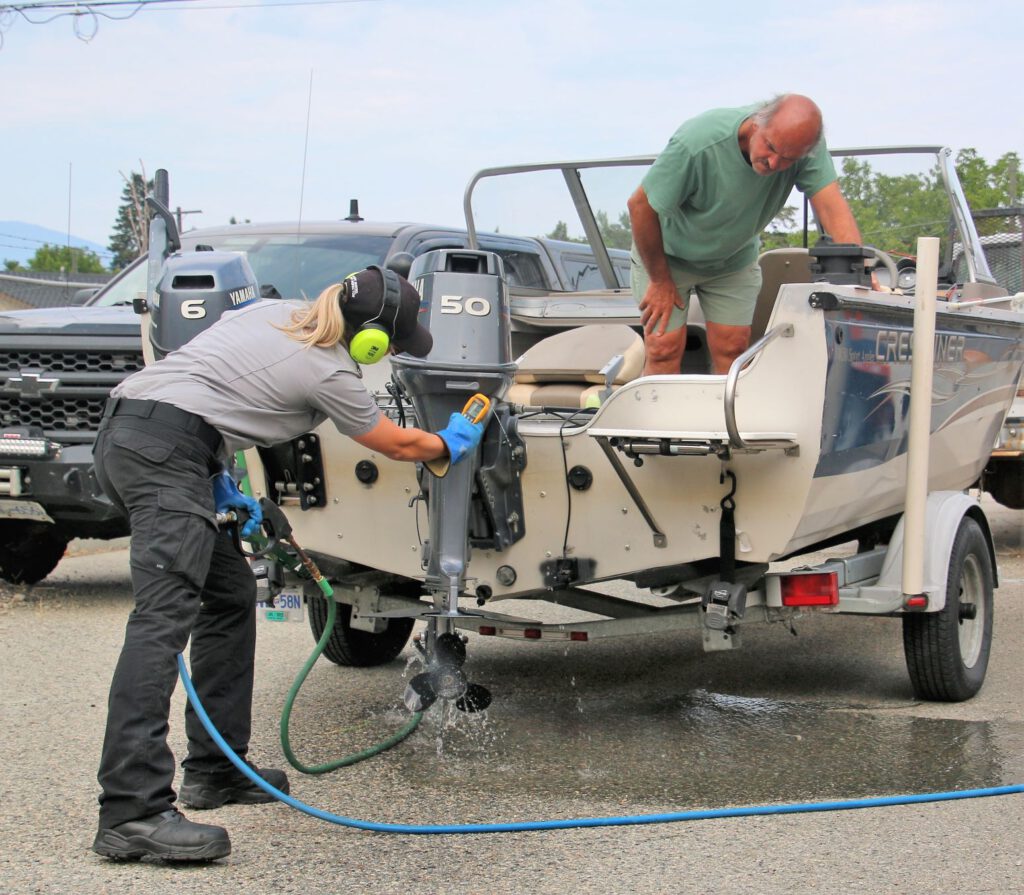
Photo Credit Neil Bousquet
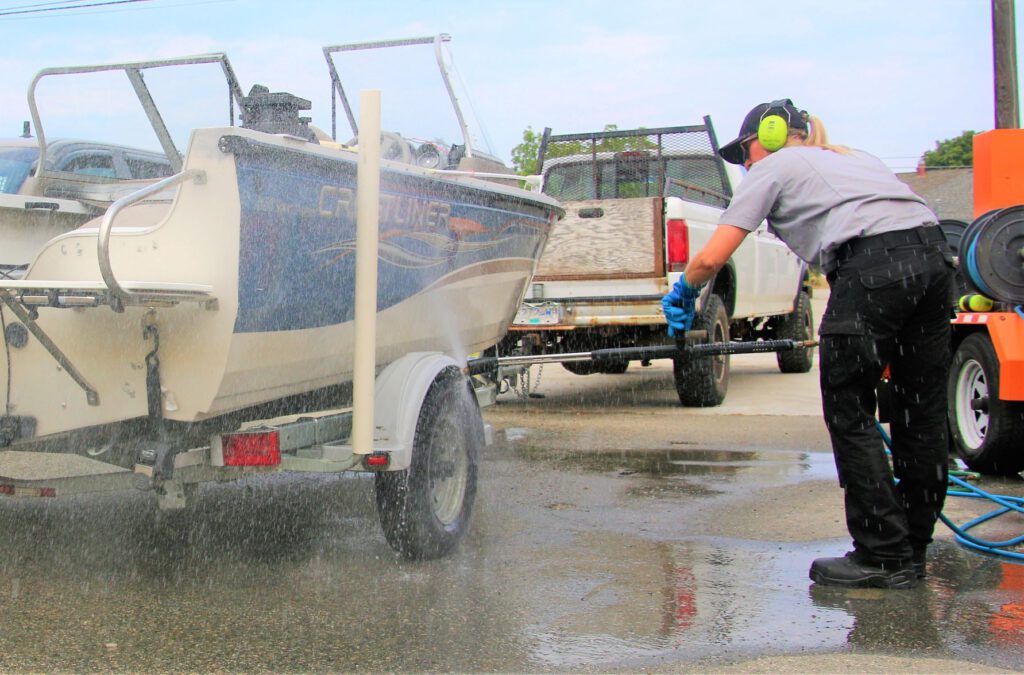
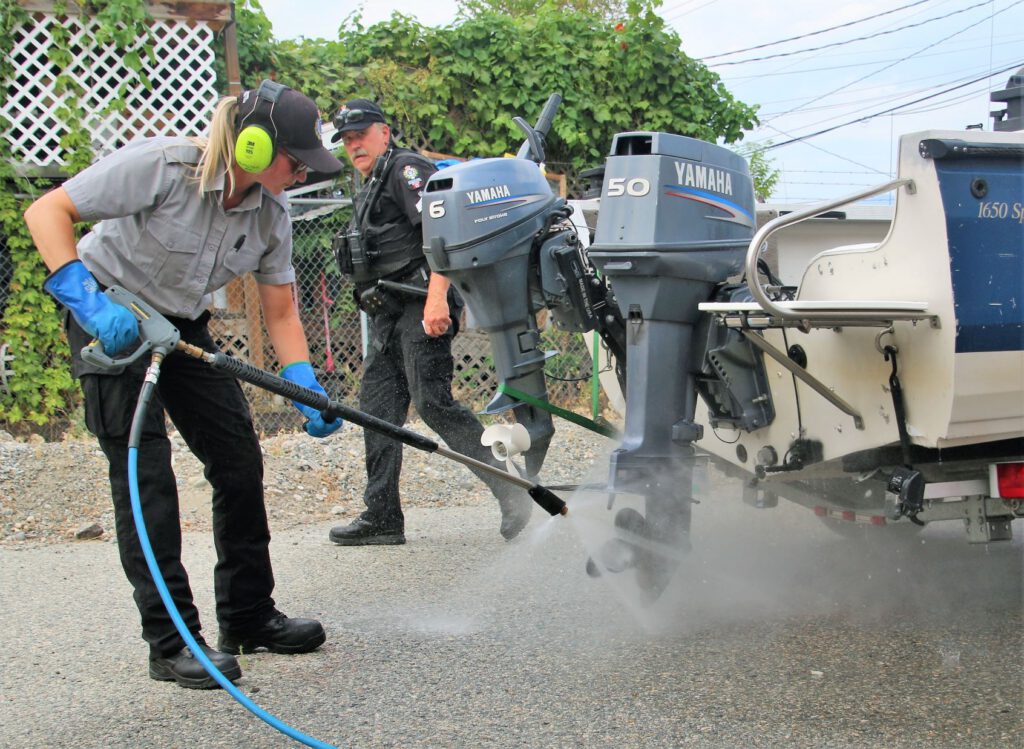
Photo Credit Neil Bousquet
